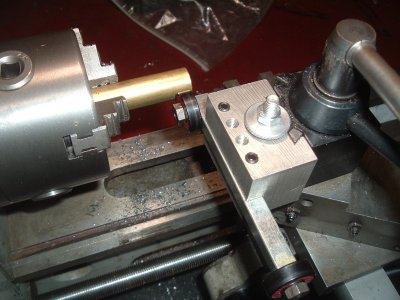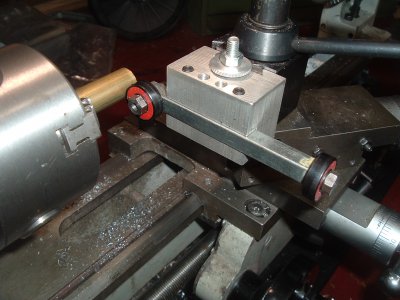- Joined
- Dec 21, 2013
- Messages
- 186
Fellas, I am in dire need of assistance. I've run into a problem that is pretty close to driving me off the deep end.Most of the time, when I try to indicate a piece in on my lathe (Atlas 618) in a three-jaw chuck, for some reason it is impossible.
What happens is rather simple.
Normally, on a larger beefier lathe I guess, when you indicate your part and tap on the high side, in brings everything a little closer in. The high side is lower, the lower side is higher. If you have a runout of .010, and you tap the high side down to .008, the runout becomes .006 - .002 is taken off each side.
But for some reason, on my lathe, when I tap the high side, it doesn't do that. It just makes the lower side lower.
For example - I zero the indicator on the low side. The high side reads .010. I adjust the high side to .007. I spin the piece, and then the low side reads -.003... the same runout.
This is driving me crazy. I have never had this problem on the larger lathes we have at school.
For reference - again, the lathe is an Atlas 6x18. Chuck is a three-jaw, 4". Indicator is a Fowler DTI, graduated in .0005.
Thanks, guys.
What happens is rather simple.
Normally, on a larger beefier lathe I guess, when you indicate your part and tap on the high side, in brings everything a little closer in. The high side is lower, the lower side is higher. If you have a runout of .010, and you tap the high side down to .008, the runout becomes .006 - .002 is taken off each side.
But for some reason, on my lathe, when I tap the high side, it doesn't do that. It just makes the lower side lower.
For example - I zero the indicator on the low side. The high side reads .010. I adjust the high side to .007. I spin the piece, and then the low side reads -.003... the same runout.
This is driving me crazy. I have never had this problem on the larger lathes we have at school.
For reference - again, the lathe is an Atlas 6x18. Chuck is a three-jaw, 4". Indicator is a Fowler DTI, graduated in .0005.
Thanks, guys.



